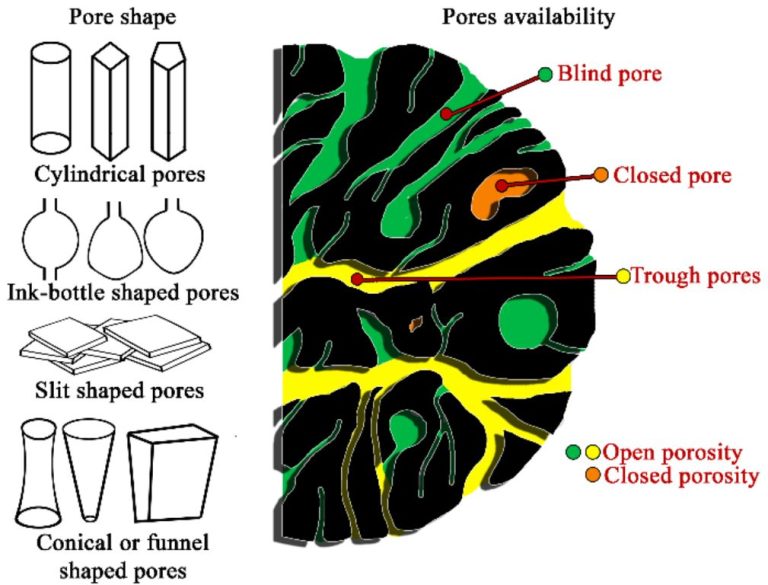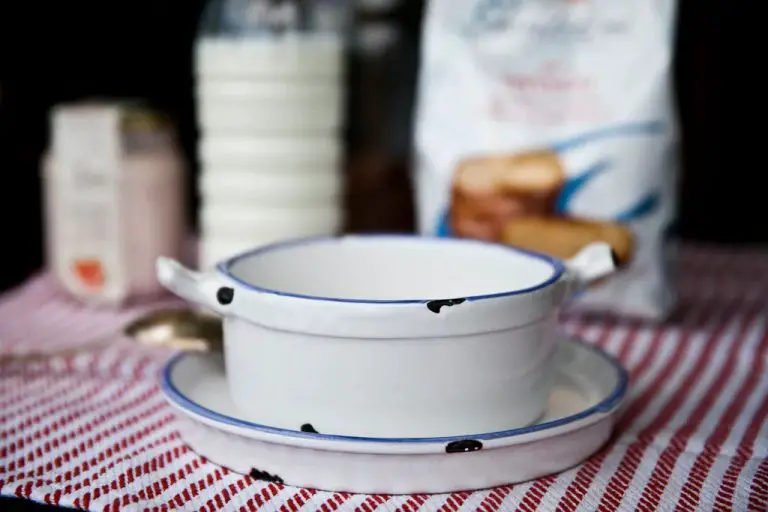How Do You Make Clay Not Stick To Surfaces?
Working with clay can be a fun and rewarding hobby. However, one of the most frustrating things is when your clay sticks to work surfaces, tools, and even your hands. Not only can stuck-on clay make a mess, but it can also ruin projects and waste precious clay. The good news is that with the right preparation and techniques, you can prevent clay from sticking where you don’t want it.
Some common surfaces that clay often sticks to are work tables, sculpting tools, rolling pins, baking pans, hands, and pasta machines. Clay also tends to stick to itself, leading to lumps and uneven textures. Stopping clay from sticking where it shouldn’t will lead to a smoother modeling experience and better looking finished products.
There are several benefits to taking steps to stop clay sticking. You’ll avoid ruining projects from stuck pieces tearing off unexpectedly. Your tools and work area will stay cleaner and you’ll spend less time scraping off dried clay. Most importantly, preventing sticking clay will make sculpting easier and more enjoyable.
Reasons Clay Sticks
There are a few key reasons why clay tends to stick to surfaces:
Clay’s Composition and Properties – The main ingredients in clay are finely ground minerals like kaolinite and illite. These minerals have a platy structure that allows the clay particles to stick together. The water content also plays a role, creating an adhesive property.
Moisture Content – Wetter clay is more prone to sticking. The water acts as a glue, causing the clay to adhere to any surface it touches. As the water evaporates over time, the dried clay becomes very difficult to remove.
Contact Pressure – When clay is pressed against a surface, the adhesive forces increase. The harder the clay is pushed, the more stubbornly it will stick. Rolling out clay with a rolling pin applies a lot of localized pressure.
Preparing Your Workspace
Properly preparing your workspace is crucial for preventing clay from sticking where you don’t want it. An unprepared workspace leads to wasted clay and frustration. Here are some tips for setting up your workspace to avoid clay sticking:
Cover Surfaces with Protection
Cover any surfaces clay will be in contact with using parchment paper or plastic. Parchment paper allows air circulation, which is ideal for working with clay. Plastic will keep moisture out, which can be helpful if working with porous or wood surfaces. Smooth your workspace and keep any wrinkled paper out of the way so clay does not form to the wrinkles.
Apply Release Agents
Applying a thin coat of release agent to all tools and surfaces is another way to prevent sticking. You can use baking soda, cornstarch, flour or commercial release agents like Murphy Oil Soap. Lightly coat tools, work surfaces, hands and clay storage containers. Reapply release agents as needed while working to keep things slick.
Clay Storage and Handling
Proper storage and handling of clay is key to preventing it from drying out and keeping it workable. Here are some tips:
Store unused clay in plastic wrap or ziplock bags to retain moisture and prevent drying. Press out any air pockets before sealing to minimize exposure to air. Store different colors of clay separately.
Keep clay at the right consistency. If it starts to dry and crack, add a few drops of water and knead until smooth again. If it’s too sticky, let it air dry slightly until firmer.
When handling clay, avoid overworking it by kneading too vigorously as this can introduce air bubbles. Work quickly and decisively when shaping to retain smooth surfaces. Avoid handling clay repeatedly as this leaves oils from skin that can inhibit paint adhesion. Wash hands frequently when working with clay.
Using Release Agents
Release agents are materials that prevent clay from sticking to surfaces. They act as a barrier between the clay and object so the two don’t bond. Release agents come in powder, spray, and oil formats. Popular options include:
Baking Soda and Cornstarch: These kitchen staples make excellent dry powder release agents. Simply sprinkle them directly onto your work surface before working with clay. They can also be applied onto clay tools and molds. The powders keep clay from sticking as you shape, mold, and imprint it.
Commercial Powders: Specialty clay release powders provide superior non-stick ability compared to kitchen ingredients. Brands like Sculpey and Makin’s Clay offer formulated powders that distribute smoothly and prevent excess clay buildup.
Sprays: Liquid release agents allow you to mist a fine layer onto surfaces. This gives an even, consistent coating that spreads into crevices. Popular options are cooking sprays, silicone sprays, and commercial clay sprays.
Oils: Food-grade oils like vegetable, olive, and coconut oil serve as great release agents. Apply a light layer by rubbing the oil over your work surface. Oils are especially helpful when working with porcelain and other temperamental clays.
Always apply release agents evenly and generously before beginning your clay project. Reapply frequently as needed while working. Pay special attention to clay tools, work surfaces, molds, and your hands to prevent sticking and drag.
Baking Soda
Baking soda is an effective homemade release agent for preventing clay from sticking. When baking soda is exposed to moisture and air, it creates a mild alkaline solution. This process, called oxidation, produces a thin barrier between the clay and work surface.
Creating a Baking Soda Application
To make a simple baking soda release agent:
- Mix 1 cup of baking soda with enough water to form a thin, spreadable paste.
- Apply the paste to surfaces that will contact clay, using a soft brush or sponge to spread evenly.
- Let dry completely before working with clay.
The paste can be stored in an airtight container and reapplied as needed. Always ensure surfaces are dry before applying clay.
Reasons for Using Baking Soda
There are several reasons why bakers and clay artisans rely on baking soda:
- It’s inexpensive and widely accessible as a common household staple.
- The oxidation process creates a subtle release barrier without residues.
- It’s non-toxic compared to some commercial agents.
Cornstarch and Flour as Release Agents
Cornstarch and flour are dry ingredients found in most kitchens and can be safe and effective release agents for clay. The key is in the preparation and application.
To use cornstarch and flour as a clay release:
- For cornstarch, first mix it with rubbing alcohol to form a thin paste.
- For flour, mix with water to form a paste.
- Thinly apply the paste to the work surface before placing clay on it. The paste will dry and act as a barrier between the clay and surface.
- Do not apply too much paste or too thickly as it may mar the clay.
- The paste can also be applied directly onto dried clay pieces before working on them further.
- You can also mix a small amount of cornstarch or flour directly into the clay as a release agent inside.
The starch in these ingredients prevents the clay from bonding to surfaces. The thin film of paste dries further and enables easy removal of clay pieces. Take care to rinse flour or cornstarch off surfaces for proper clean up.
Commercial Release Agents
When looking for commercial options, there are a few types of specialty clay release sprays and liquids that work very effectively:
-
Liquid oils like WD-40 help create a barrier between the clay and surfaces. Spray or wipe a small amount onto the work surface before shaping the clay.
-
Silicone sprays contain silicone oil, which prevents sticking. These sprays designed for baking and clay work can be found at craft stores.
-
Specialty clay release sprays are formulated specifically for polymer and modeling clays. They contain non-toxic ingredients that keep clay workable and won’t inhibit painting or glazing later.
Always check the manufacturer’s instructions when using commercial release agents, as some may interact with clay composition or affect baking/firing.
Proper Clay Drying
Allowing your clay creations to dry properly before handling and baking is an important step to prevent sticking. When clay is wet, moisture gets trapped between the clay and surfaces it comes into contact with. As the clay dries, this moisture evaporates away. If you handle or bake clay before it is thoroughly dry, any remaining moisture can still cause it to adhere to other materials.
A good rule of thumb is to allow air-drying clay projects to sit undisturbed for at least 24-48 hours. The longer you allow clay to dry before touching or moving a project, the less likely sticking will occur. Test clay creations gently to see if any lingering tackiness remains before repositioning.
Similarly, ensure clay has dried fully before baking. Baking wet clay can result in cracks or explosions from trapped moisture turning to steam. Letting pieces air dry for several days, or accelerated drying in a low temp oven, helps prevent these issues. Fully dried clay should feel cool and smooth to the touch with no wetness remaining.
Having patience with the drying process helps prevent frustration from clay sticking before, during, and after creation. Proper planning for drying time enables handling and baking clay correctly.
Conclusion
There are a few key techniques to prevent clay from sticking to surfaces.
Using release agents like baking soda, cornstarch, flour, or commercial sprays will create a barrier between the clay and work surface.
Proper clay storage by sealing unused clay in air tight bags or containers will prevent it from drying out and becoming prone to sticking.
Allowing clay projects to dry slowly under plastic wrap or damp cloths will also let moisture escape without the clay bonding to the surface underneath.
The benefits of preventing sticking are less frustration, ease of working with clay projects, and better end results.
For more detailed information on clay properties and handling techniques, consult specialty clay or pottery resources such as books, manufacturer guidelines, or experts.


